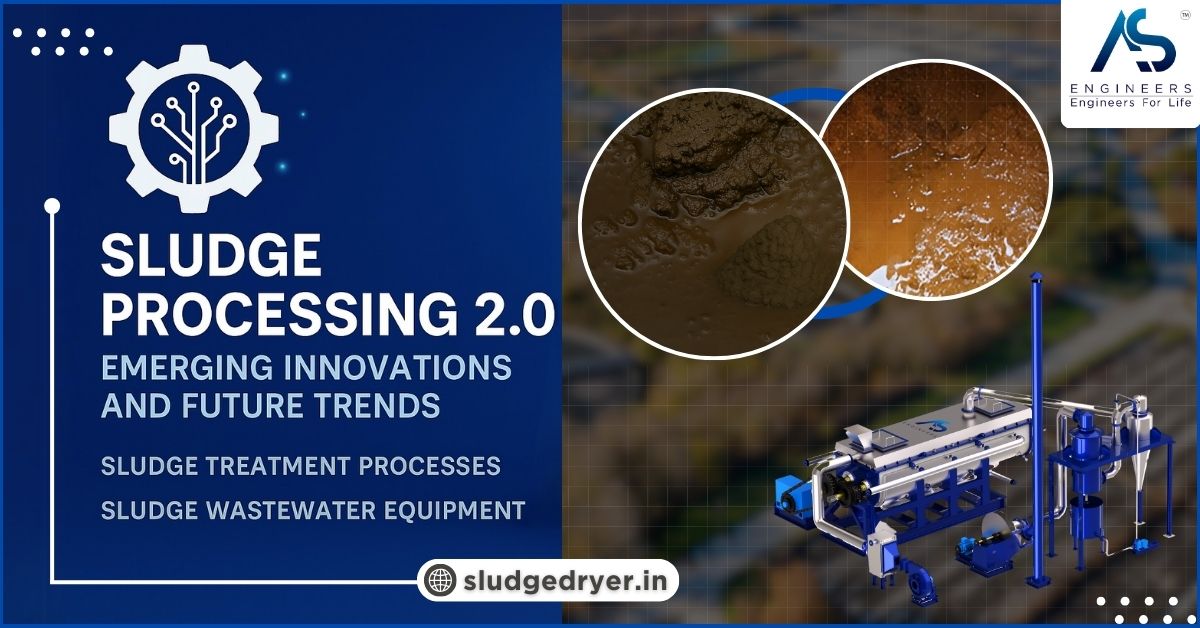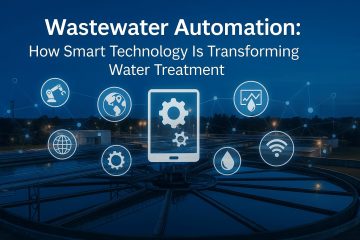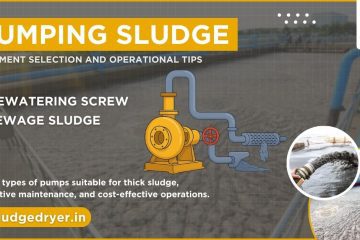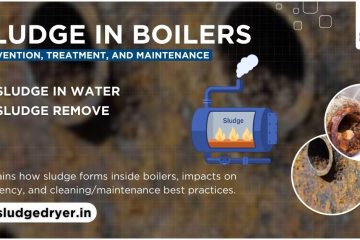Have you ever wondered what happens to the billions of gallons of wastewater we generate daily? Behind the scenes, a revolution in sludge processing is transforming how we handle one of our most challenging waste streams. With global water scarcity affecting over 40% of the world’s population and strict environmental regulations tightening, innovative sludge processing technologies aren’t just nice to have—they’re essential for our sustainable future.
In this comprehensive guide, we’ll explore the cutting-edge developments reshaping sludge processing, from AI-powered automation to energy-positive treatment facilities. Whether you’re an environmental engineer, municipal manager, or industry professional, you’ll discover how these emerging technologies can help you turn waste into resources while reducing operational costs and environmental impact.
Table of contents
- What is Sludge Processing and Why Does It Matter?
- Advanced Sludge Treatment Processes: Breaking New Ground
- AI and Automation: The Brains Behind Modern Sludge Processing
- Resource Recovery: From Waste to Value
- Energy Efficiency: Reducing the Carbon Footprint
- Sensor Technology and Real-Time Monitoring: The Eyes and Ears of Processing
- Modular and Decentralized Systems: Bringing Processing Closer to Source
- Regulatory and Market Trends Driving Innovation
- Challenges and Limitations: The Road Ahead
- Implementation Strategies: Making Innovation Work for You
- Future Outlook: What’s on the Horizon?
- Conclusion: Embracing the Sludge Processing Revolution
What is Sludge Processing and Why Does It Matter?
Sludge processing refers to the treatment and handling of semi-solid waste generated during wastewater treatment. This residual material contains water, organic matter, pathogens, heavy metals, and other contaminants that must be properly managed before disposal or beneficial reuse.
The Evolution of Sludge Management
Traditional sludge handling was primarily focused on disposal—often through landfilling or incineration. Today’s approach has shifted dramatically toward resource recovery and circular economy principles.
“We no longer see sludge as waste but as a resource mine,” explains Dr. Emily Chen, environmental engineering professor at Stanford University. “The organics can generate energy, the nutrients can be recovered for agriculture, and the water can be reclaimed.”
The Environmental and Economic Stakes
The stakes couldn’t be higher. Poorly managed sludge can:
- Contaminate groundwater and surface water
- Release greenhouse gases
- Waste valuable resources
- Consume excessive energy
- Drain municipal budgets
The global sludge treatment market is projected to reach $13.8 billion by 2026, with a compound annual growth rate of 5.8%. This growth is driven by stricter regulations, water scarcity concerns, and technological innovations making resource recovery more economically viable.
Advanced Sludge Treatment Processes: Breaking New Ground
The most exciting developments in sludge processing combine multiple technologies to maximize efficiency and resource recovery. Here’s what’s changing the game:
Thermal Hydrolysis: Unlocking Energy Potential
Thermal hydrolysis has emerged as a breakthrough pre-treatment technology that dramatically improves the efficiency of anaerobic digestion. By applying high pressure and temperature (typically 165°C at 6 bar pressure), this process breaks down complex organic materials into more easily digestible compounds.
The benefits are substantial:
- 40-50% increase in biogas production
- 30-40% reduction in biosolids volume
- Enhanced dewaterability
- Pathogen destruction
- Higher-quality final biosolids
Washington DC’s Blue Plains Advanced Wastewater Treatment Plant implemented the world’s largest thermal hydrolysis system in 2015, transforming their energy consumption profile. The facility now produces 10 megawatts of electricity—enough to power about one-third of the plant’s operations.
Supercritical Water Oxidation: The Complete Solution
Supercritical water oxidation (SCWO) represents one of the most complete sludge treatment technologies available today. Operating at temperatures and pressures above water’s critical point (374°C and 218 atm), this process breaks down virtually all organic compounds in minutes.
What makes SCWO particularly impressive:
- Near-complete destruction of organic contaminants (>99.99%)
- Minimal air emissions
- No production of biosolids requiring disposal
- Energy self-sufficiency
- Complete pathogen destruction
- Potential for heat and energy recovery
While historically limited by corrosion and scaling issues, new reactor designs and materials have overcome these challenges. Several commercial-scale SCWO facilities are now operational in Japan, with Europe and North America following suit.
Electrokinetic Dewatering: Reducing Energy Consumption
Dewatering is typically one of the most energy-intensive aspects of sludge processing. Electrokinetic dewatering—applying an electric field to accelerate water removal—is changing this equation.
This technology:
- Reduces energy consumption by 30-50% compared to conventional dewatering
- Achieves higher solids content (up to 45%)
- Works with difficult-to-dewater sludges
- Requires smaller equipment footprint
- Decreases polymer consumption
A municipal treatment plant in Ontario, Canada implemented electrokinetic dewatering and reported a 40% reduction in biosolids transportation costs due to the higher solids content achieved.
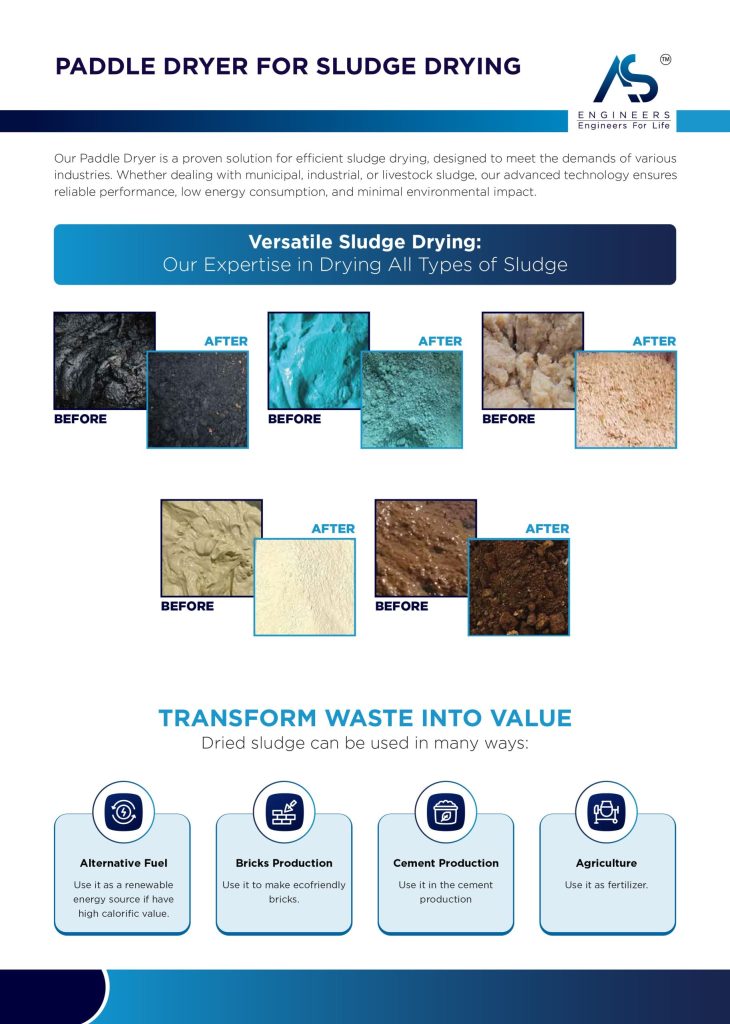
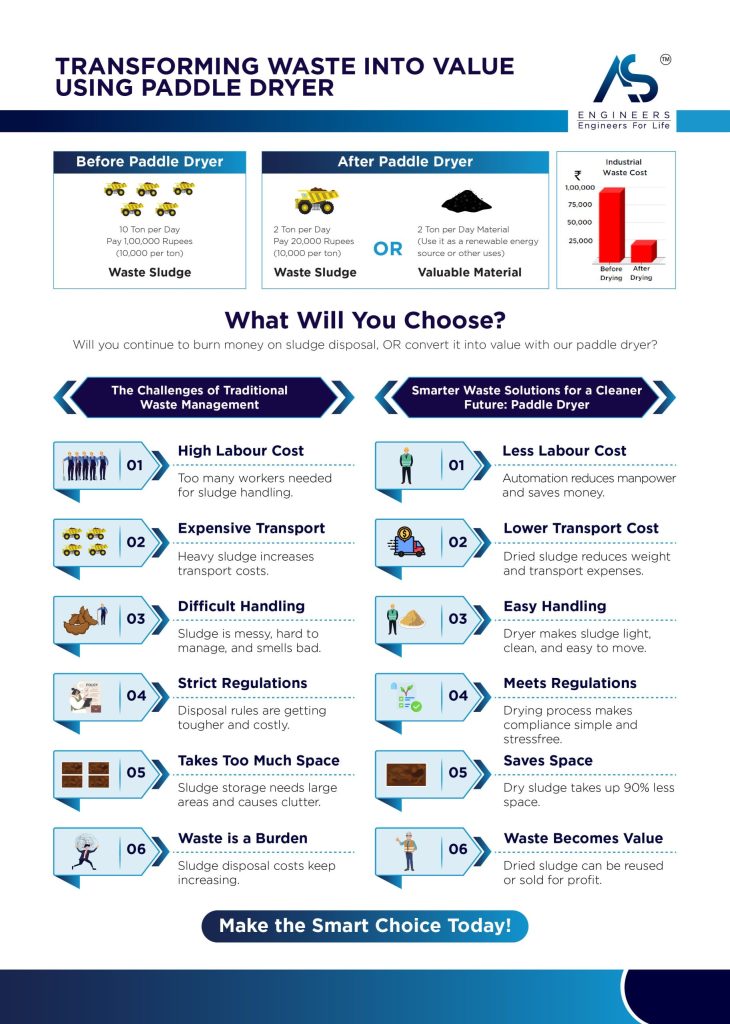
AI and Automation: The Brains Behind Modern Sludge Processing
Artificial intelligence and advanced automation are transforming sludge processing from an art to a precision science. These technologies enable real-time optimization, predictive maintenance, and adaptive control strategies previously impossible with conventional approaches.
Digital Twins: Virtual Replicas for Real-World Optimization
Digital twin technology creates a virtual replica of physical sludge processing systems, allowing operators to:
- Simulate various operating conditions
- Test process modifications before implementation
- Identify bottlenecks and inefficiencies
- Optimize energy and chemical usage
- Train operators in a risk-free environment
The Copenhagen Lynetten wastewater treatment plant developed a digital twin that reduced energy consumption by 16% and chemical usage by 14% within the first year of implementation.
Machine Learning for Process Optimization
Machine learning algorithms are particularly valuable for sludge processing because they can:
- Identify complex patterns in process data
- Adapt to changing sludge characteristics
- Predict equipment failures before they occur
- Optimize multiple variables simultaneously
- Continuously improve with more data
A treatment facility in Singapore implemented machine learning controls for their anaerobic digestion process, achieving a 25% increase in biogas production and 18% reduction in energy costs.
Autonomous Systems and Robotics
Robotic systems are taking on hazardous and repetitive tasks in sludge processing:
- Autonomous sampling and monitoring
- Robotic maintenance of dewatering equipment
- Remote inspection of digesters and tanks
- Automated chemical dosing systems
- Self-cleaning sensor networks
These systems not only improve worker safety but also ensure consistent, 24/7 operation without human fatigue or error.
Resource Recovery: From Waste to Value
Modern sludge processing isn’t just about waste treatment—it’s about harvesting valuable resources. The circular economy approach is driving innovations in resource recovery technologies.
Phosphorus Recovery: Mining “White Gold”
Phosphorus is a finite resource essential for agriculture, and wastewater sludge contains significant amounts of it. New technologies are making phosphorus recovery economically viable:
- Struvite precipitation processes recover phosphorus as magnesium ammonium phosphate
- Thermochemical treatments extract phosphorus from incineration ash
- Biological processes use specialized microorganisms to accumulate and release phosphorus
The recovered phosphorus can be used as a slow-release fertilizer, reducing dependence on mined phosphate rock. A facility in Portland, Oregon recovers 90% of incoming phosphorus as commercial-grade fertilizer, generating a new revenue stream while reducing maintenance problems caused by struvite buildup.
Bioplastic Production from Waste Activated Sludge
Certain bacteria in activated sludge can accumulate polyhydroxyalkanoates (PHAs)—biodegradable polymers that can be used to produce bioplastics. The process works by:
- Selecting and enriching PHA-accumulating bacteria
- Feeding them with volatile fatty acids from fermented primary sludge
- Creating stress conditions that trigger PHA accumulation
- Extracting and purifying the biopolymers
A pilot facility in the Netherlands is producing 2-5 kg of PHA per day from waste activated sludge, with projections for full-scale implementation within the next five years.
Biochar Production: Carbon Sequestration and Soil Amendment
Pyrolysis of dewatered sludge produces biochar—a stable carbon-rich material with multiple benefits:
- Acts as a soil amendment improving water retention and nutrient availability
- Sequesters carbon for hundreds to thousands of years
- Adsorbs contaminants in soil and water applications
- Can be used as a renewable fuel
- Reduces biosolids volume by up to 90%
The city of Stockholm, Sweden has implemented a pyrolysis system that converts 100% of their biosolids into biochar, which is then used in urban tree planting projects. This approach has reduced their carbon footprint and created a valuable product from what was once considered waste.
Energy Efficiency: Reducing the Carbon Footprint
Energy consumption represents one of the largest operational costs in sludge processing. New technologies are dramatically improving energy efficiency while reducing greenhouse gas emissions.
Heat Recovery Systems: Capturing Thermal Energy
Modern heat recovery systems capture and reuse thermal energy that would otherwise be lost:
- Heat exchangers on digester effluent
- Waste heat recovery from dryers and incinerators
- Effluent heat pumps
- Combined heat and power systems
A wastewater treatment plant in Zurich, Switzerland implemented a comprehensive heat recovery system that reduced their heating costs by 70% and allows them to supply district heating to neighboring buildings.
Advanced Aeration Systems: Breathing New Life into Treatment
Aeration typically accounts for 50-70% of energy use in biological treatment processes. New aeration technologies include:
- Fine-bubble diffusers with automatic cleaning mechanisms
- Membrane aeration systems that transfer oxygen more efficiently
- Dissolved oxygen control systems using real-time sensors
- Intermittent aeration strategies optimized by AI
These technologies can reduce aeration energy consumption by 30-50% while maintaining or improving treatment performance.
Solar Drying: Harnessing Natural Energy
Solar drying combines the free energy of the sun with mechanical assistance to reduce sludge volume:
- Greenhouse structures with controlled ventilation
- Automated turning and mixing equipment
- Solar panel integration for energy self-sufficiency
- Year-round operation in various climates
A solar drying facility in Qatar achieves 90% solids content using only solar energy and minimal mechanical assistance, despite the region’s challenging climate conditions.
Sensor Technology and Real-Time Monitoring: The Eyes and Ears of Processing
Advanced sensor technologies provide unprecedented visibility into sludge processing operations, enabling proactive management and optimization.
Online Rheology Measurement: Understanding Sludge Behavior
Rheology—the study of flow behavior—is critical for optimizing sludge handling, pumping, and dewatering. New online rheometers can:
- Continuously monitor sludge viscosity and yield stress
- Automatically adjust polymer dosing for dewatering
- Optimize mixing energy in digesters
- Predict pipeline pressure drops and pumping requirements
- Alert operators to changes in sludge characteristics
A treatment plant in Munich, Germany implemented online rheology monitoring and reduced polymer consumption by 22% while improving cake solids content by 3%.
Smart Sensors for Pathogen Monitoring
Traditional microbial testing takes days to complete. New biosensor technologies can detect pathogens in near-real-time:
- DNA-based sensors that identify specific pathogens
- Immunosensors that detect pathogen-specific antigens
- Metabolic activity sensors that measure microbial respiration
- Flow cytometry for rapid cell counting and characterization
These technologies enable operators to verify disinfection effectiveness immediately rather than days later, improving both safety and regulatory compliance.
Continuous Emissions Monitoring
Advanced air quality sensors monitor emissions from thermal drying and incineration processes:
- Real-time measurement of particulates, NOx, SOx, and VOCs
- Early detection of incomplete combustion
- Automated adjustment of operating parameters
- Blockchain-based verification for regulatory reporting
- Remote monitoring and alerts
These systems ensure regulatory compliance while optimizing combustion efficiency.
Modular and Decentralized Systems: Bringing Processing Closer to Source
The traditional centralized model of wastewater treatment is being challenged by modular and decentralized approaches that can be more sustainable and resilient.
Container-Based Treatment Systems
Containerized sludge processing units offer several advantages:
- Rapid deployment (weeks instead of years)
- Scalability through parallel installation
- Factory testing before deployment
- Lower capital investment
- Flexibility to relocate as needs change
These systems are particularly valuable for remote locations, temporary installations, and emergency response scenarios.
On-Site Treatment for Industries
Industries with high-strength waste are increasingly implementing on-site sludge processing:
- Food and beverage manufacturers
- Pulp and paper mills
- Chemical production facilities
- Pharmaceutical companies
- Textile manufacturers
On-site processing reduces transportation costs, enables tailored treatment approaches, and can recover resources specific to the industry’s needs.
Community-Scale Biosolids Management
Community-scale systems bring sludge processing closer to end users of recovered resources:
- Neighborhood-scale anaerobic digesters
- Community composting facilities
- Local heat and power generation
- Direct agricultural application programs
- Urban gardening initiatives
These approaches reduce transportation requirements and strengthen connections between waste generators and resource users.
Regulatory and Market Trends Driving Innovation
The regulatory landscape and market demands are powerful drivers of innovation in sludge processing. Understanding these trends helps predict where the technology is heading.
Stricter Contaminant Limits
Regulations governing contaminants in biosolids continue to tighten:
- Emerging contaminants like PFAS and microplastics
- Stricter pathogen reduction requirements
- Lower heavy metal limits
- Pharmaceutical and personal care product residues
- Antimicrobial resistance concerns
These regulatory pressures are driving the development of more advanced treatment technologies capable of addressing these contaminants.
Carbon Footprint Reduction Requirements
Climate change concerns are pushing the industry toward carbon neutrality:
- Carbon pricing mechanisms affecting operational costs
- Requirements for greenhouse gas inventories
- Tax incentives for renewable energy production
- Funding tied to carbon reduction goals
- ESG (Environmental, Social, Governance) reporting requirements
Forward-thinking utilities are setting ambitious goals, with some aiming to be carbon-negative by 2030.
Public Acceptance and Stakeholder Engagement
Public perception significantly impacts the viability of sludge management solutions:
- Increasing transparency about treatment processes
- Community engagement in planning and implementation
- Educational programs about resource recovery benefits
- Branding of recovered products (like “Bloom” soil amendment)
- Certification programs for biosolids quality
Successful facilities are investing in public outreach and stakeholder engagement to build trust and support for their operations.
Challenges and Limitations: The Road Ahead
Despite impressive advances, significant challenges remain in sludge processing technology:
Managing Emerging Contaminants
New classes of contaminants pose treatment challenges:
- Per- and polyfluoroalkyl substances (PFAS) are highly persistent
- Microplastics accumulate in sludge and resist degradation
- Antibiotic-resistant genes can potentially spread through biosolids
- Nanomaterials have unknown long-term environmental impacts
- Pharmaceutical compounds may affect soil organisms
Research into destruction technologies for these contaminants is accelerating, with thermal, electrochemical, and advanced oxidation processes showing promise.
Balancing Energy and Resource Recovery
Different resource recovery options sometimes compete with each other:
- Maximizing biogas production may reduce nutrient recovery potential
- Phosphorus recovery can impact dewaterability
- Thermal processes recover energy but may destroy valuable nutrients
- Carbon sequestration goals may conflict with energy recovery
Integrated process modeling helps identify optimal recovery strategies for specific facilities and local conditions.
Economic Viability in Smaller Facilities
Many advanced technologies remain economically challenging for smaller facilities:
- High capital costs for specialized equipment
- Limited technical expertise for operation
- Smaller waste volumes affecting economics of recovery
- Complex regulatory compliance requirements
- Limited local markets for recovered resources
Regional approaches, shared facilities, and service models are emerging to address these challenges.
Implementation Strategies: Making Innovation Work for You
Implementing new sludge processing technologies requires careful planning and execution. Here are key strategies for successful innovation:
Pilot Testing and Demonstration
Before full-scale implementation, consider:
- Pilot testing with your specific sludge characteristics
- Site visits to existing installations
- Phased implementation starting with critical process areas
- Partnership with technology providers for performance guarantees
- University collaborations for independent evaluation
A six-month pilot program can provide valuable data for full-scale design while identifying potential issues specific to your facility.
Total Cost of Ownership Analysis
Look beyond initial capital costs to evaluate:
- Energy consumption over the equipment lifecycle
- Maintenance requirements and spare parts availability
- Chemical consumption changes
- Labor requirements and training needs
- Revenue potential from recovered resources
- Regulatory compliance benefits
A comprehensive 20-year lifecycle cost analysis often reveals that technologies with higher upfront costs deliver significant long-term savings.
Workforce Development and Training
Success depends on operational expertise:
- Early operator involvement in technology selection
- Comprehensive training programs before startup
- Ongoing technical support from vendors
- Knowledge transfer procedures for staff transitions
- Performance incentives tied to process optimization
Operators who understand not just how but why processes work can troubleshoot effectively and continually improve performance.
Future Outlook: What’s on the Horizon?
The future of sludge processing promises even more innovative approaches:
Microbial Fuel Cells: Electricity from Sludge
Microbial fuel cells (MFCs) generate electricity directly from organic matter in sludge:
- Bacteria oxidize organic compounds and transfer electrons to anodes
- Different configurations optimize for either energy production or treatment
- Integration with conventional anaerobic digestion can boost overall energy recovery
- Low maintenance requirements make them suitable for remote applications
- Emerging designs address previous scaling limitations
While still developing, this technology could transform energy-intensive treatment plants into net energy producers.
CRISPR and Synthetic Biology Applications
Genetic engineering tools are being applied to sludge treatment:
- Engineered microorganisms that enhance resource recovery
- Bioaugmentation with specialized degraders for difficult compounds
- Biosensors using modified organisms to detect specific contaminants
- Enhanced biogas production through optimized microbial communities
- Biological systems for targeted metal recovery
These approaches are still largely in research phases but show tremendous potential for improving process efficiency and resource recovery.
Zero-Liquid Discharge Systems
Zero-Liquid Discharge Systems Complete water recovery from sludge is becoming technically feasible:
- Membrane distillation systems powered by waste heat
- Forward osmosis for low-energy dewatering
- Advanced evaporation and crystallization technologies
- Selective ion exchange for contaminant removal
- Closed-loop processing with complete water recycling
As water scarcity increases, the value of recovered water makes these technologies increasingly economical.
Conclusion: Embracing the Sludge Processing Revolution
The transformation of sludge processing from waste management to resource recovery represents one of the most significant environmental engineering achievements of our time. By embracing these innovative technologies, treatment facilities can:
- Reduce their environmental footprint
- Generate renewable energy
- Recover valuable nutrients
- Produce high-quality water for reuse
- Create new revenue streams
- Decrease operational costs
- Enhance community acceptance
The future of sludge processing is not just about handling waste—it’s about recognizing the value in what we once discarded and creating closed-loop systems that benefit both our economy and environment.
As you consider upgrades to your facility or plan new installations, remember that the most successful implementations combine technological innovation with thoughtful operation and maintenance strategies. The technologies highlighted in this article offer tremendous potential, but their success ultimately depends on the people who design, operate, and continually improve them.
What steps will you take to join this sludge processing revolution?

